How to Estimate TV Reception in Your Area
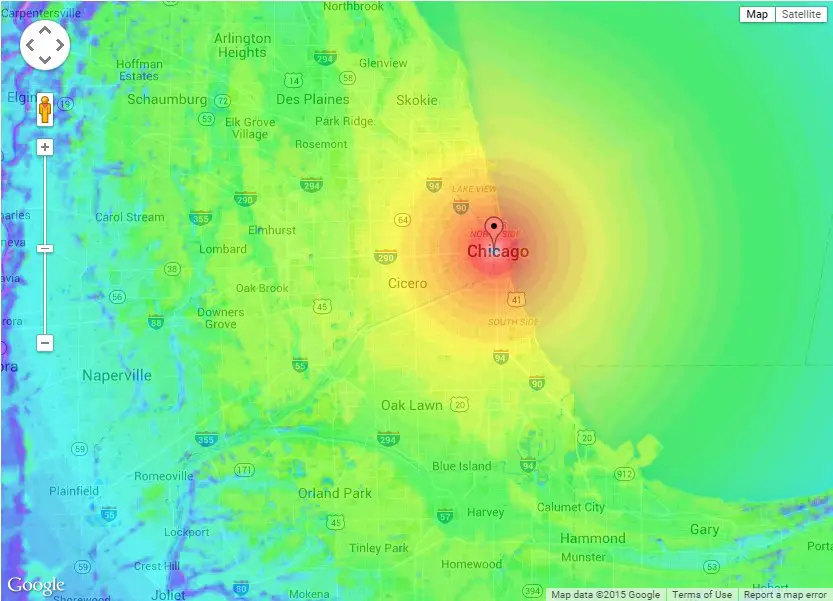
Readers often ask me are “how many channels will I be able to receive?”, and “what kind of antenna should I get?”
I wanted to take a moment to explain some of the factors affecting your TV reception so you can make some better estimates of how many channels you’ll be able to get with an antenna, and how you can improve your reception.
How TV Signals Propagate
In an ideal flat world, TV signals would radiate in a perfect circle outward from the source, like ripples of water in a still pond. The strength of the signal would just depend on how far you were from the transmitter.
But, the real world can be bumpy with all kinds of hills, mountains, and valleys. I did some analysis using an online tool at the TVFool.com website to determine how much effect these terrain features have on your TV signal. The answer is that they have a huge effect!
First, let’s take a look at a super flat area like Houston, TX which is the ideal case:
The colors indicate how strong the TV signal is, from white to red to green to blue and purple. Note how the signal radiates in an almost perfect circular “target” pattern when the land is flat.
How Terrain Affects TV Signals
Okay, Houston is an ideal case. Let’s take a look at some whacky terrain and see what effect it has on the signals. Check out Boston, MA:
Boston has some mild hills, and you can already see that the perfect circular pattern is very distorted, and that there are little valleys where the TV signal is weak. If you happen to live in one of these valleys, your reception will be poor.
Next, let’s take a look at my home town of Los Angeles, CA, which lies in the basin between some fairly large mountains and a really crazy pattern:
You can clearly see that the signal is pretty much stopped in its tracks to the north, where the mountains are. Also, you can see purple “shadows” where the smaller mountains are blocking the signal. Interestingly, there is a “shadow” just to the south of the transmitter where the mountain itself blocking the signal. In that area, the people live only a few miles from the transmitter, but are getting a very weak signal!
Let’s take a look at San Francisco now:
This shows another crazy pattern. The transmitter is located on the famous Sutro Tower on Twin Peaks. If you have a line of sight to the tower, you’re in good shape, even if you’re way across the bay in Oakland or even Berkeley. But, if you live in South San Francisco, you’re screwed because mountains are blocking the signal.
These maps show how much terrain affects TV signals. Even if you’re really close to a transmitter, if you are in the “shadow” of a mountain or hill, your signal might be weak.
On the other hand, if you live in a flat area with nothing blocking the signals (like across a span of water), you might be able to get good TV reception even from very far away.
As informative as these maps are, however, they are limited because they do not take into account buildings, trees, and other features that might block your signals. New York City looks great “on paper”, but if a skyscraper is between you and the TV tower, you could be in bad shape.
This is why it’s so hard to predict how many channels you’ll be able to get. Someone who is 70 miles away might get better reception than someone who is 10 miles away, due to the terrain or objects blocking the signal.
How to Check Your Location
You can use this tool to check any station in your area. Find the call letters of the station you want to check. If you don’t know them off hand, go to the Station Finder, or Antennas Direct’s Transmitter Locator and enter your location to see a list of stations and their call letters.
Next, go to TV Fool’s Online Coverage Map Browser Tool and enter the call letters of the station. Click “Search”, and a colored “heat map” will appear showing signal strength. You can zoom in to find your exact location.
What Kind of Antenna to Get
The colors in the map will tell you what kind of antenna you need. White is the strongest, then red, then, orange, then yellow, then green, then blue, then purple.
If you are in a green or stronger area, you should be able to receive that channel with a good indoor antenna like the Mohu Leaf.
If you are in a blue area, you should be able to receive that channel with an attic or roof antenna.
Anything further out – you might be able to get with a roof antenna, but no promises!
One caveat is that VHF signals are more difficult to receive (by most HD TV antennas) than UHF signals. So, even if a VHF station is “green”, you might not be able to receive it with an indoor antenna.
Another factor you’ll have to consider is whether the TV signals in your area are all coming from the same direction or from different directions. In Los Angeles, all of the TV signals come from Mt. Wilson, so I can use a unidirectional antenna pointed in that direction. If the signals are coming from different directions in your area, you’ll want to use an antenna that is more omnidirectional. I’ll talk more about this in a future article. For now, the Mohu Leaf does a pretty good job of receiving signals from different directions, although most antennas are somewhat directional, including the Leaf.
How to Improve Your Reception
These maps show how important it is to have a direct line of sight to the transmitter. Any objects in the way will literally cast a shadow where the TV signals are weak.
The way to somewhat improve this situation is to put your antenna up as high as possible. The second floor is better than the first. The attic is even better. The roof, even better. Of course, if you have a 10,000-foot mountain in the way, putting your antenna on the roof probably won’t help, but you can make the call based on the coverage map and the obstacles in your immediate area, whether it’s worth the effort or not.
Another super important thing you can do based on these maps is to point your antenna towards the transmitter tower. Figure out the compass direction and point your antenna accordingly. If you need to run a longer cable in order to do that, it can be well worth it. You want to have the antenna on the side of your house that faces the signals.
An amplified antenna might help if all of your signals are far away. If some are close and some are far, it can actually hurt your overall reception, because the stronger signals will swamp your amplifier and drown out the weak signals.
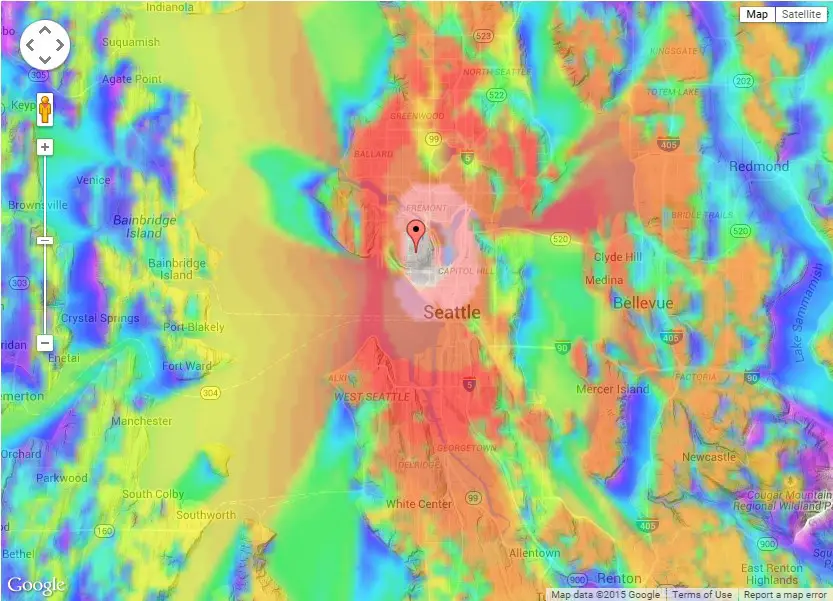
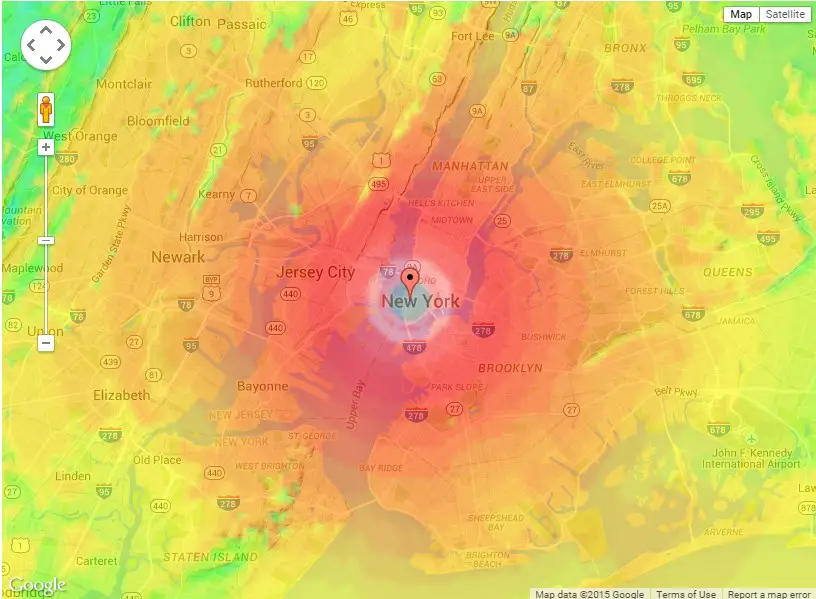
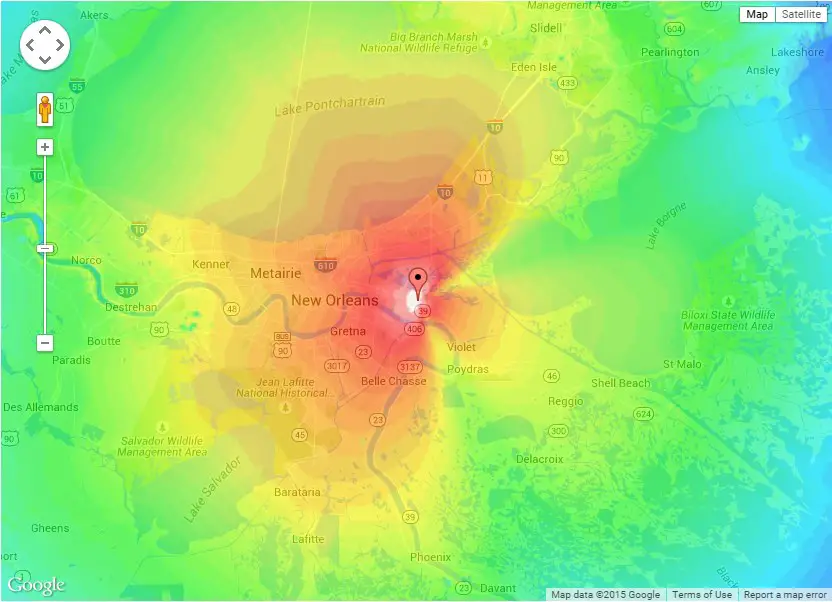
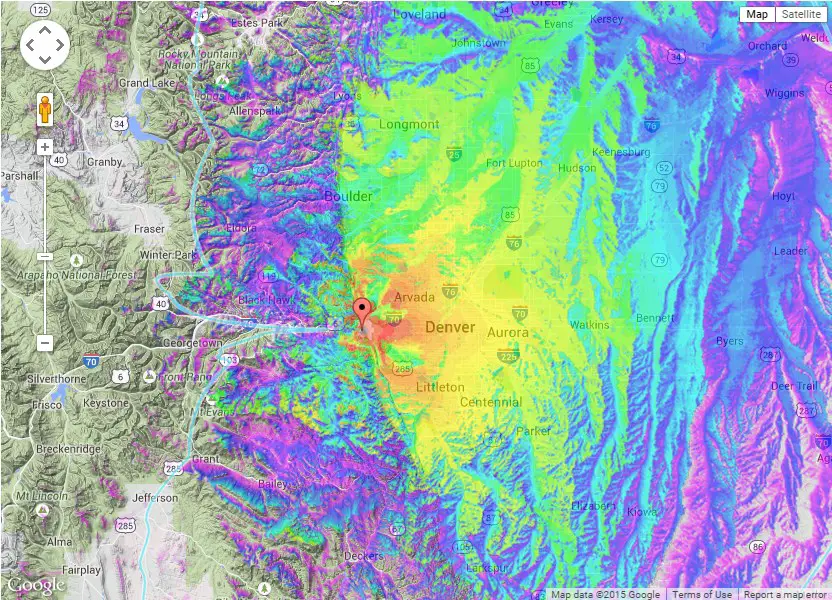

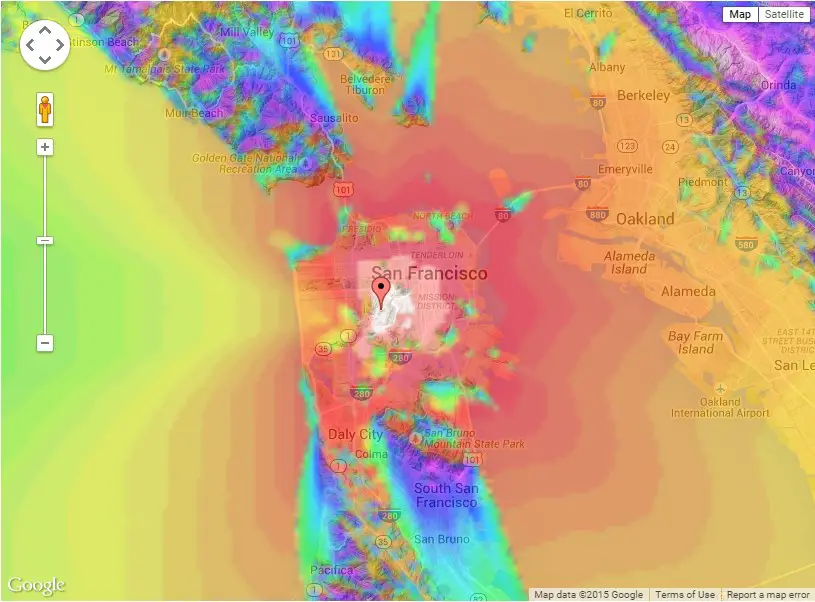
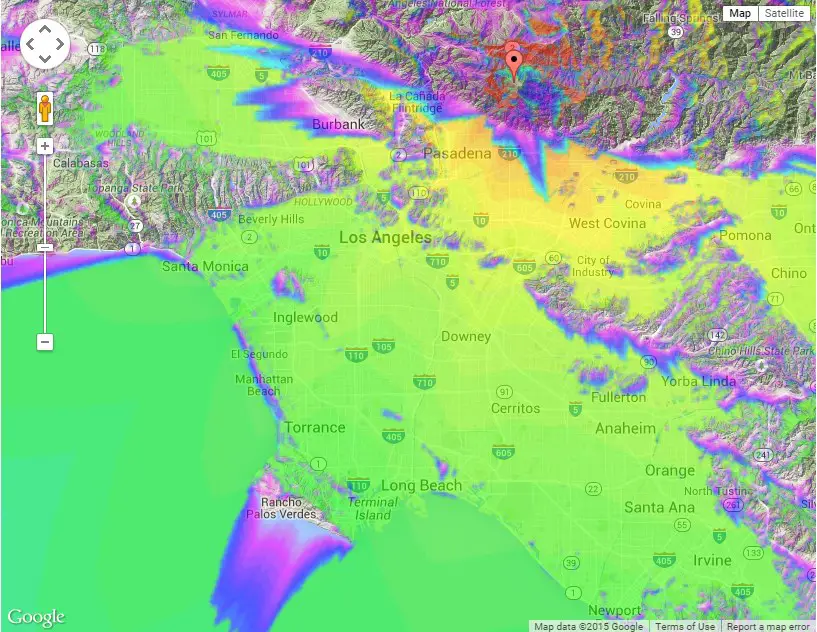
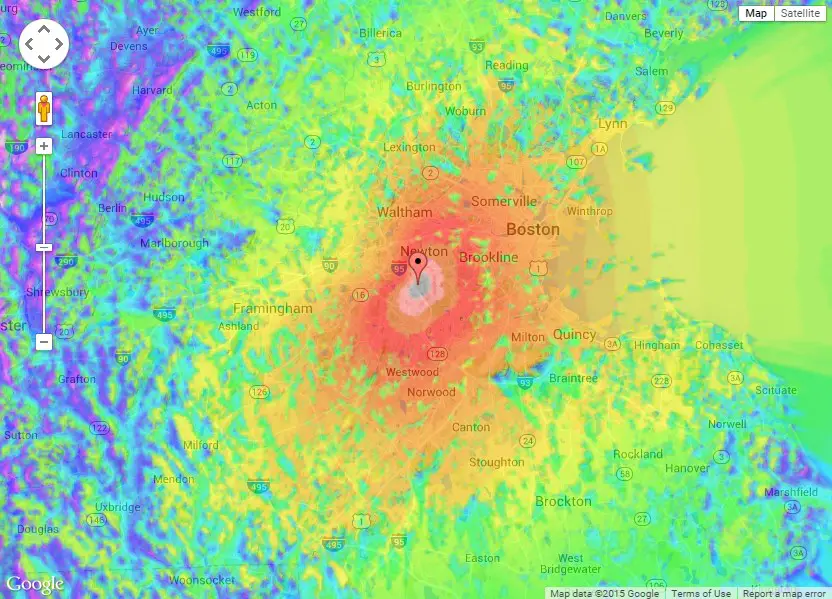
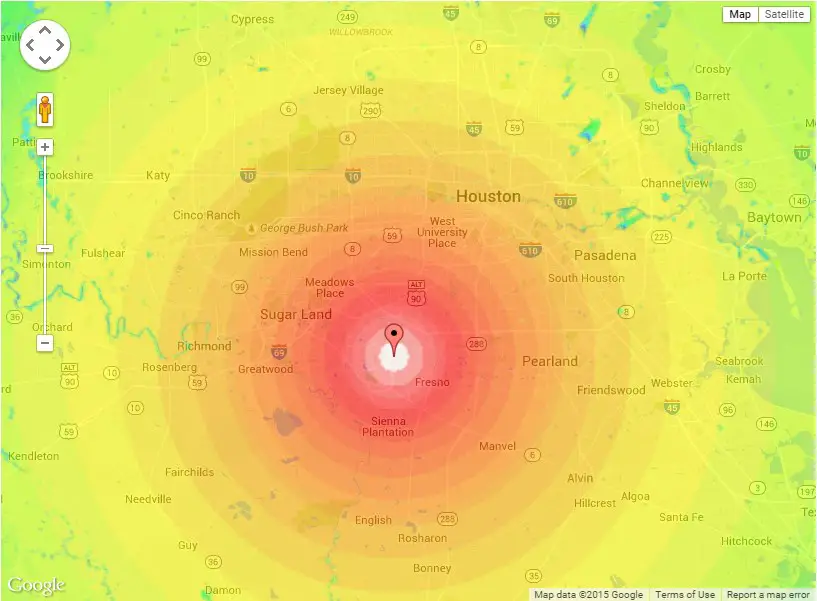

Conclusion
I hope these maps have helped you understand how much of an effect terrain and other obstacles can have on your TV reception. Here is the full list of cities that I looked at:
Please feel free to post the map of YOUR area below, and let us know how many channels you are getting! – Brian
Keep in Touch – Subscribe for Free
If you liked this article, please sign up for email updates. I’ll send you a note when I publish a new article, no more than once every few months. Unsubscribe any time. – Brian


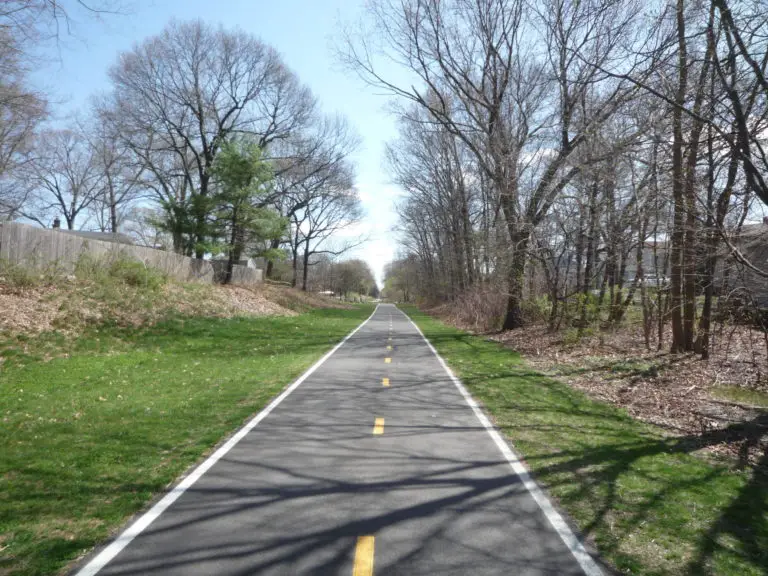
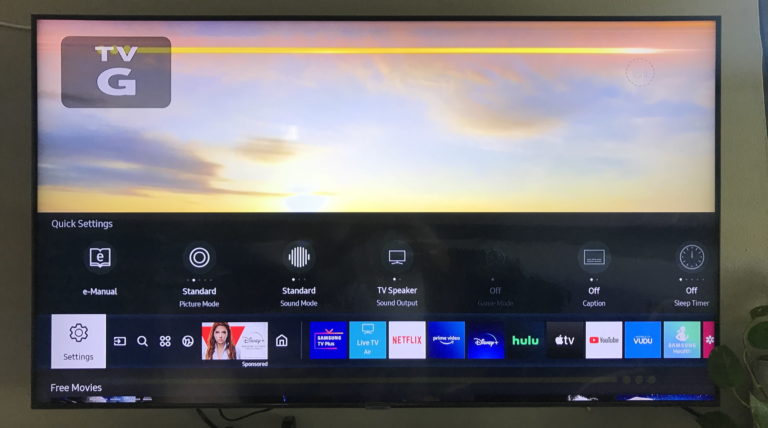
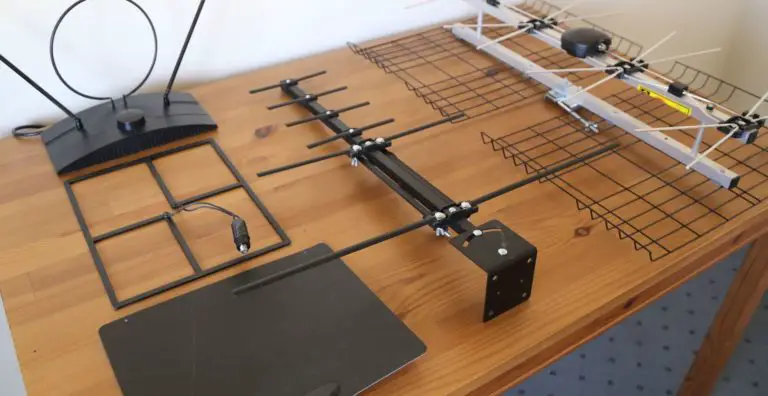
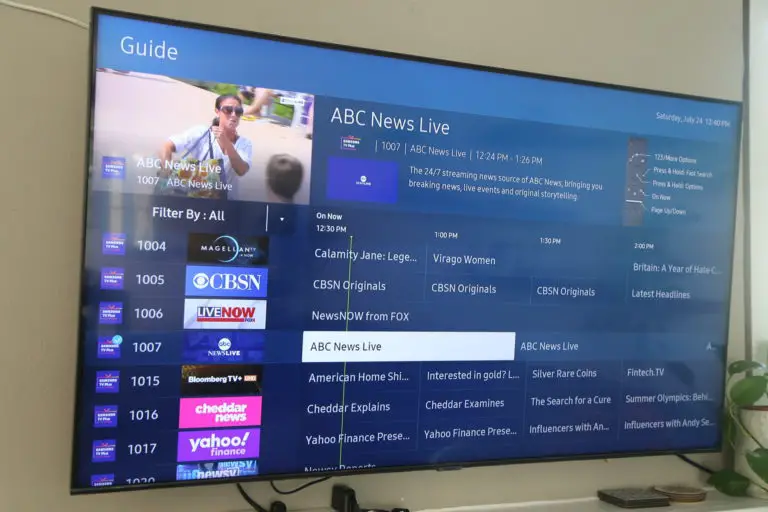
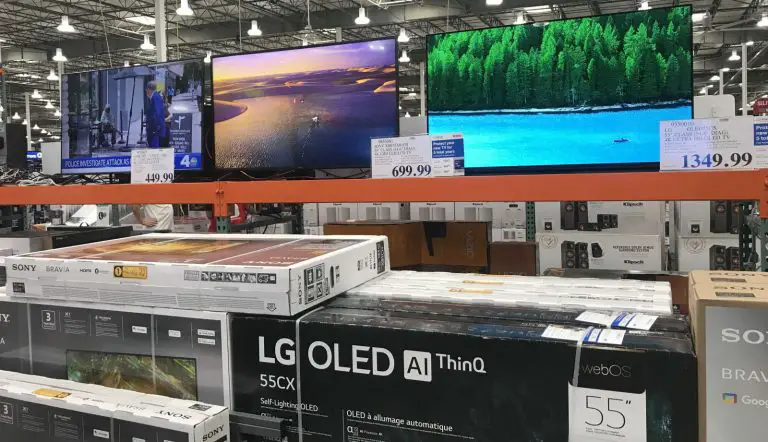
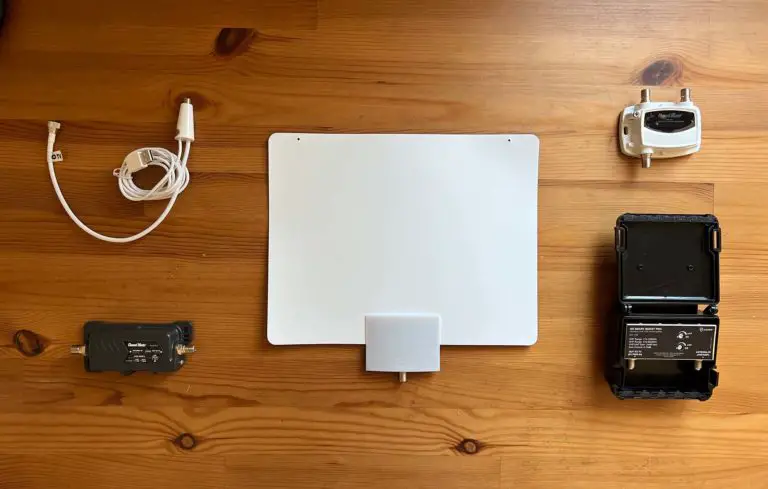
Hi. Looking to get an antenna for my mother in Tampa, FL 33647. Not sure if she would need a 25′, 35′ or 50′ radius, but most likely will get her the 50′ one. When I put in her info to test the range of channels available, it’s only showing the local channels. Do any of these antennas ever pick up any other channels, like basic cable channels? There’s a “best value” one on Amazon that has a 50′ radius, comes with a 20′ co-axle cable and a 10′ USB cord. She has a flat screen mounted on her living room wall and a tablet. Would she be able to use it for both or would she need two?
Hi LBCandyGirl,
I checked that zip code and there are lots of local channels there. Basic cable channels are not available on broadcast TV unfortunately.
The radius ratings are somewhat arbitrary and by no means guaranteed. If you want an indoor antenna, I’d suggest either the Mohu Leaf or Cable Cutter Aerowave, both non-amplified. If you get the Leaf, get some good RG6 coax cable to go with it:
https://www.disablemycable.com/antennas/
In your mother’s area where signals are strong, an amplifier might actually hurt her reception.
Best,
Brian
how accurate is tvfool? we’re about 62 miles or so from the LA towers, but unfortunately directly behind a large hill right across the street. signal at the top of the hill is great, where we are at the bottom obviously not so much, according to tvfool.
i’m thinking about getting the largest deepest fringe antenna i can find and testing it before putting it up, but i don’t want to even bother if there’s no point. plus, i’m going to have to pay someone to put the damn thing up on the roof, so i’d be testing from the ground or from a room upstairs pointed through a window…which isn’t necessarily going to help things.
Hi Crackers8199,
Here’s my advice: before buying anything, talk to your neighbors, local friends on Facebook, and folks on Nextdoor to see how many channels and what kinds of antennas your neighbors are using.
Best,
Brian
nobody in the neighborhood seems to be doing anything but paying for cable/satellite. we do have locast available here (so i guess some people are using that, including me at the moment), but i’ve been looking for ways to improve my picture quality.
the FCC site does seem to show weak signal (but signal nonetheless) at my location. all of our locals are in brown on that result set.
Yeah, I bet no one is able to get broadcast TV then. 62 miles and behind a hill does not bode well. You could try an outdoor antenna mounted as high as possible; just make sure you can return it.
Brian
i think it’s more that people don’t realize the HOA can’t prevent them from putting an antenna up. people here despise our HOA.
according to the topographical maps of the area, ground level where my house sits is about 70 feet or so below the very top of the hill.
one reason i thought i might have a chance is because my roof line is already 30+ feet off the ground. add another 10-15 feet to that if i can get the antenna up that high above the roof line, and i’m at least within an eyelash of the top of the hill across the street. hopefully at least enough to get me out of the shadow. like i said, the signal at the top of the hill is in the yellow on tvfool, so it’s somewhat strong in the area in general.
If the station finder lists the channels as moderate, will the Mohu Leaf 30 work for me. I live in a rural area with trees. The zip code is 37334.
Hello. Hopefully, you can educate me on this subject. I dropped my 15 year Directv subscription over 3 years ago. The dish was mounted on the facia board of my house. I purchased a Lava HD-2605 antenna and mounted it on the same dish J-pole. Hoo-ray, I got 3 of 5 the local stations all the time, and 1 other intermittenly. As time passed, I lost the CBS station, but the fox station remained strong. All the channel guides show these stations as weak signals, but my FOX was 4 of 5 bars on the meter. Last November, my FOX station disappeared as well. Now I find a new channel, A Christian Network is at full strength… Here’s where I become lost, the Christian channel is transmitted from the same point as both my FOX, NBC and ABC stations come from. Researching, Wiki shows the Christian network transmits at 1000 kw power, while the others are at 650 kw and 725 kw or so (memory fades). Is it possible that the Christian channel is blocking the NBC and FOX channels? I have changed location and height of a new antenna, with same results (PBS and Cristian channels with 5 of 5 bars indicated reception). Any thoughts would be gladly accepted. Thanks, Jeff J.
Hi Jeff,
The Christian station should not be interfering with the other channel unless they transmitting on the same frequency (i.e., they are on the same channel).
Here are some tips for antenna placement; many of these apply to indoor antennas but some can be applied to outdoor antennas:
https://www.disablemycable.com/antenna-tips/
Best,
Brain
I have a digital ready antenna and tv and can run a channel search and get channels just fine. My problem is, after about 10-15 minutes of watching, the signal starts to go from good to weak and eventually gone. If I shut the tv off for a few minutes and turn it back on, the reception is back to good for a while but then starts to dip off again. Then I turn the tv off and back on. Good signal again for a while. Then I end up repeating this process over and over. Any ideas of my issue? The tv is a 2006-2007 ish dynex model.
Hi Matt,
It sounds like your TV’s tuner is going bad in a way such that when it heats up, it can no longer function. The best bet would be to experiment with another TV, external tuner, or broadcast TV DVR.
Best,
Brian
Thanks for your reply Brian. I will look into one of those options and let you know what I discover.
Brian, hello. We reside outside Washington DC in zip code 20878. We have a 2nd floor condo in s garden style building located in a shallow valley surrounded by woods. We purchased the GE UnltraPro Stealth HD Antenna that has 60-miles range. Inside we have better reception than anticipated with most of the TV station in the DC area but not all and none from Baltimore. However, we would like to discreetly locate the antenna outside on our balcony, which faces south, southwest at 215 degrees but are able to point the antenna in any direction needed to maximize the signal. The exterior construction is wood with aluminum studying used for interior walls. Eventually, once we have this antenna working, we would like to have the antenna work for whole condo but for now focusing on obtaining the best possible signal on one TV.
Cool, thanks for sharing! Let us know how it turns out! If you want to drive the whole condo you might need an amplifier.
Best,
Brian
Gene Sky , Date 07-07-2016
Go to http://www.tvfool.com , Help With Reception , Digital Broadcast Tv Reception.
Also you can go to , http://www.ftalist.com . FTA = Free To Air Satellite Tv. Many Networks can be received for Free. All of the PBS Networks and more networks.
Thank you for your informative article! I’ve been cord free for 3 years using a Radio Shack amplified antenna. At the moment, I use it with my new smart TV in my living room. I also have a small 8 year old TV that can also be used as a computer monitor. I want to put it in my bedroom so I connected it to my amplified antenna to see if I would get any channels in my bedroom. To my surprise I got zero channels! This is shocking because my bedroom is directly next to my living room and their windows both face the same directions. I get 26 stations on my smart TV in my living room. I had the antenna next to the window, facing the same way in my bedroom as is faces in my living room. I have to assume that there’s something going on with the old TV because the problem isn’t the antenna. Can you tell me why I get no channels on the 8 year old small flat screen TV/monitor in my bedroom and how to remedy that problem?
Hi Dusteyrose,
That is somewhat surprising. If your old TV definitely has a digital broadcast tuner, then it might not be as high quality as your smart TV. Also, make sure you went through the digital channel scan process properly.
Best,
Brian
Hi Brian, Thank you for your speedy reply. I just realized I stated my problem incorrectly, so sorry! That’s one of the problems of being electronically illiterate. Your reply jolted some sense into my brain. Apparently the TV/monitor is lacking a digital broadcast tuner because there are only two channel input options which are TV and Cable, there is none for antenna. I guess my only use for the old TV/monitor is watching DVD’s if I can find an RCA cable because it has no HDMI. Either that or use it as a huge paperweight! Thanks again!
OK, glad you figured it out!
Best,
Brian